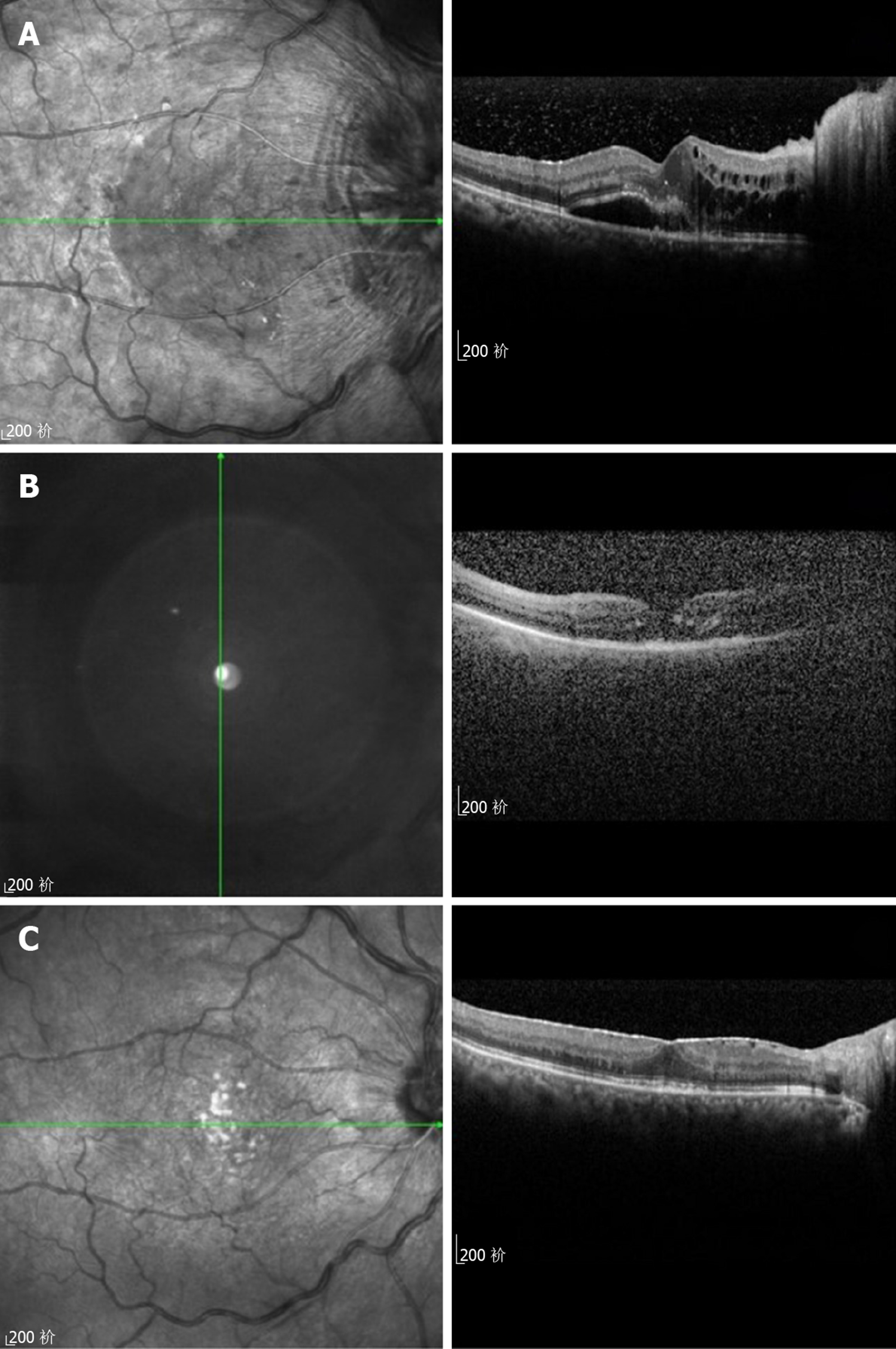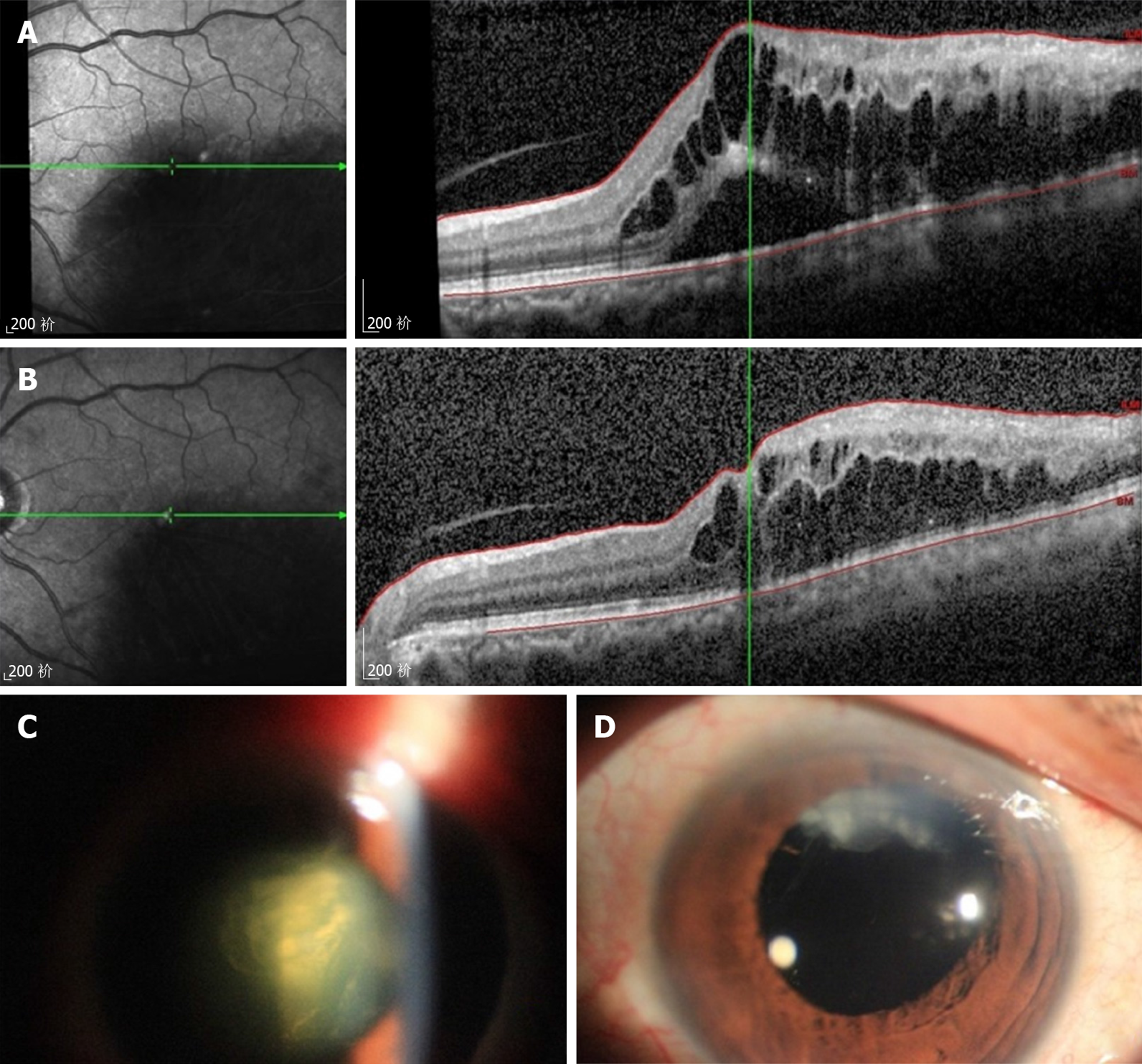Copyright
©The Author(s) 2019.
World J Clin Cases. Nov 26, 2019; 7(22): 3784-3791
Published online Nov 26, 2019. doi: 10.12998/wjcc.v7.i22.3784
Published online Nov 26, 2019. doi: 10.12998/wjcc.v7.i22.3784
Figure 1 Case 1 optical coherence tomography imaging examinations.
A: Before injection, optical coherence tomography (OCT) showed a serous retinal detachment and macular and optic nerve edema located at the outer retina; B: One month after injection, OCT showed that the macular edema was in remission, although the image was obscure; C: Seven months after injection, macular edema subsided significantly, but the macular membrane had formed.
Figure 2 Case 1 slit lamp examinations.
A: One day after injection, retroillumination showed that the suspended particles of triamcinolone acetonide (TA) formed a villiform opacity behind the posterior capsular; slit lamp examination showed a capsular channel perforation on the posterior capsule of the lens, but the lens cortex and core remained transparent; B: Two weeks after injection, retroillumination showed that the TA suspension behind the posterior capsule had a tendency to be absorbed; slit lamp examination showed that the lens cortex and core remained transparent; C: One month after injection, the TA suspension behind the posterior capsule was further absorbed; slit lamp examination showed that the lens cortex and core remained transparent; D: Eight months after injection, retroillumination showed that the TA particles were mostly absorbed, limited rice crust opacity had formed and posterior subcapsular opacification was found; slit lamp examination showed that the lens cortex and core had a slow progressive opacity; E: One week after cataract surgery, retroillumination showed that the posterior capsule had partial opacity in the upper quadrant of the nose, but no opacity in the pupil area; slit lamp examination showed that the intraocular lens was implanted in the sulcus.
Figure 3 Case 2 optical coherence tomography imaging examinations and slit lamp examinations.
A: Before injection, optical coherence tomography (OCT) revealed cystoid macular edema; B: After cataract surgery, OCT revealed that macular edema had partially subsided; C: One day after injection, retroillumination showed the lens opacity and expansion. The image was blurred due to corneal edema; D: Four weeks after cataract surgery, retroillumination showed the remnants of the lens cortex in the upper quadrant.
- Citation: Su J, Zheng LJ, Liu XQ. Iatrogenic crystalline lens injury during intravitreal injection of triamcinolone acetonide: A report of two cases. World J Clin Cases 2019; 7(22): 3784-3791
- URL: https://www.wjgnet.com/2307-8960/full/v7/i22/3784.htm
- DOI: https://dx.doi.org/10.12998/wjcc.v7.i22.3784











